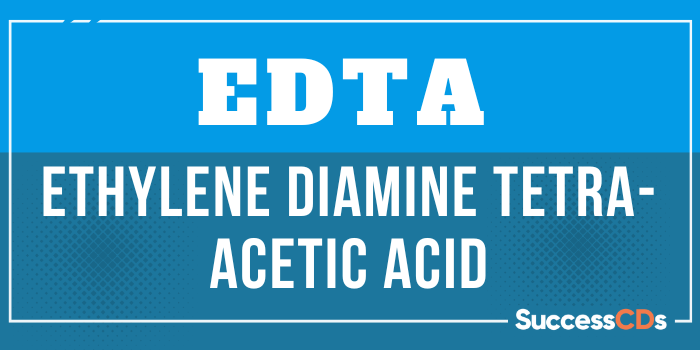
The Full form of EDTA is Ethylene Diamine Tetra-acetic Acid. EDTA is a colourless crystalline slightly soluble organic compound used in biochemistry and inorganic chemistry. It is a powerful chelating (KEE-late-ing) agent capable of removing a heavy metal, such as mercury or lead, from the blood. EDTA is used to lower levels of calcium in the blood when they have become dangerously high. EDTA is a prescribed medicine that is given by injection into the muscle (intramuscularly) or into the vein (intravenously).
Intravenous EDTA is used to treat brain damage caused by lead poisoning; to see how well the therapy is working for suspected lead poisoning; to treat poisonings by radioactive materials such as uranium, plutonium, thorium, and strontium; for removing copper in patients with a genetic disease called Wilson’s disease; and for reducing blood levels of calcium in people whose levels are too high.
Intravenous EDTA is also used for blood and heart vessel conditions including high blood pressure, high cholesterol, irregular heartbeat due to exposure to chemicals, atherosclerosis (“hardening of the arteries”), stroke, angina (chest pain), and blood circulation problems. Other intravenous uses of EDTA include treatment of rheumatoid arthritis, cancer, osteoarthritis, macular degeneration (an eye condition), Alzheimer’s disease, diabetes, Parkinson’s disease, multiple sclerosis, and skin conditions including psoriasis and scleroderma.